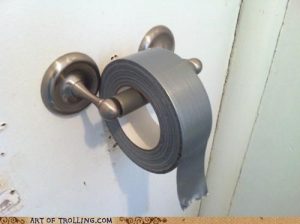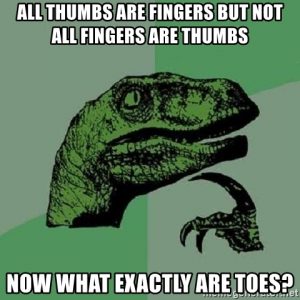What’s DOMS Got to Do, Got to Do With It?
Delayed Onset Muscle Soreness, or DOMS, is the sensation of getting sore a day or two after a hard workout, and may take anywhere from 12-36 hours to start up. This means you bust ass on Monday, fist pump your excellence on Tuesday, and can’t sit on the toilet on Wednesday without using a hand rail.

While this feeling can psychologically be empowering to feel like you had a good workout (I can’t feel anything below my beard. I ROCK!!), and as a result it’s going to give you better results than if you could walk like you hadn’t just gotten off a horseback ride for 10 hours, DOMS doesn’t really indicate much.
Here’s a brief list of times in my life I’ve had DOMS from specific circumstances:
- I worked with an exercise I hadn’t in a few months
- I used a very different volume with the same exercise
- I was jet lagged and used half the weight I would usually use
- I walked around a new city on vacation
- I studied for a long time in a weird position in university and my traps were jacked
- I ran a 5k
- I stretched longer than usual
- A workout after a few weeks of not weight training
- A workout after a few nights of bad sleep
- Training camp
- A basketball tournament
- a pickup basketball game after not playing for a decade
- a hike at elevation
- a long drive in an uncomfortable car seat
- back to back workouts with the same muscle groups
You can see some stuff that would indicate a “good workout” but also a lot of rather random stuff that shouldn’t be an indicator of “good” anything, but moreso just stress to tissues. This also doesn’t include the times I’ve been injured and had some serious DOMS going on.
Essentially, DOMS will happen when something changes. Either you’re changing up your workouts, doing a new exercise, a new volume or weight of an old favourite, or you’re not well recovered or ready to train effectively to manage the work. The resulting change and readiness can cause some very small rips and tears in muscle tissues, which when remodelled and repaired can be stronger than before. It’s also this remodelling that’s a primary driver of hypertrophy, but not the only one.
Because of the relationship with hypertrophy and bodybuilding, people who are in the gym tend to try to get this DOMS to happen on a regular basis, even if their specific goalsets don’t require hypertrophy, or if they aren’t actively training to grow muscles at all.
Here are some specific goals that may not need hypertrophy to happen, in order to still achieve the goal:
- body fat loss
- strength gain
- endurance/cardio improvements
- flexibility gains
- sport performance
Even if someone’s training for these specific elements, there’s a common belief among many going to the gym that in order for a workout to be good or to “count” they have to be sore following that workout. While it may be true that a good workout could make you sore, it’s not necessary to be sore to have a good workout. It’s sort of like how all thumbs are fingers, but not all fingers are thumbs.

You can have a great workout and not be sore. You could have a great workout and be sore. You could have a mediocre workout and be sore, or not sore. You can get kicked in the shins or fall down the stairs and be sore. You could slip on the ice and do some marvel of breakdance ninja fighting and not actually fall over and be sore the next day.
I train some endurance athletes, specifically track cyclists, who put the majority of their training in on a bike and augment that with gym workouts. If I put them through a workout that makes biking harder due to being really sore, it wasn’t a good quality workout for them as it’s affecting their entire reason for training.
If I put someone who is looking to lose weight through a hard workout and they get so sore they aren’t willing to workout tomorrow or the next day, and are hesitant to come back the day after that, it’s not helping their goal of weight loss. An injury post-rehab client getting sore could set their progress back significantly or re-aggravate that injury. This doesn’t mean they shouldn’t get sore or that we have to avoid it entirely, but that as a goal, it’s not really all that great to shoot for.
However, if getting sore is the only observation that satiates your requirements for a good workout, I gotchu covered. I’m offering kicks in the shins after every workout for an additional $20. Satisfaction of soreness guaranteed, or I’ll kick you in the other shin for free.